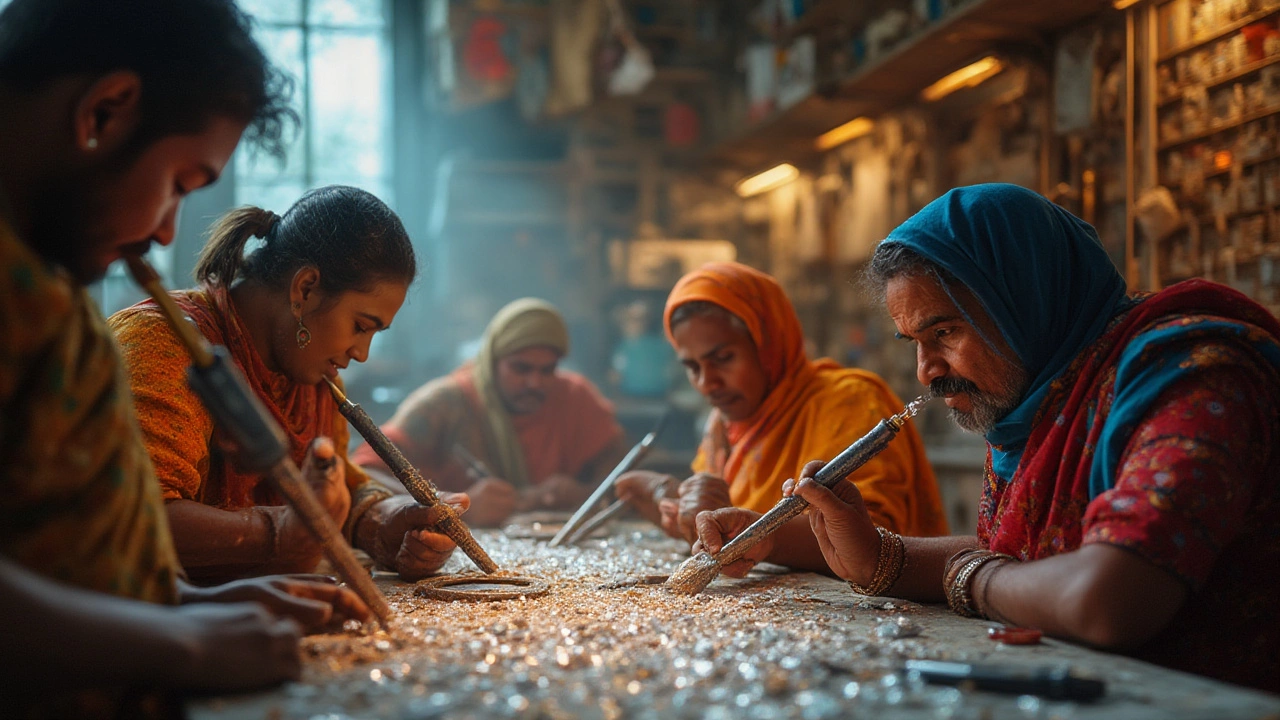
Surat is world-famous for diamonds. Dive into why this Indian city shines in the global diamond industry, plus interesting facts and expert tips on Surat's sparkling legacy.
When you hear Indian diamond cutting, the process of shaping and polishing diamonds in India using skilled craftsmanship and modern technology. Also called diamond cutting in India, it blends traditional hand‑work with precision equipment to bring out the stone’s sparkle. Understanding this craft helps you see why a well‑cut Indian diamond often shines brighter and costs less than a poorly cut one.
At the heart of the craft is the Diamond Cut, the pattern of facets that determines a diamond’s visual performance. The cut directly influences Brilliance, the intensity of light reflected from the diamond’s top surface, making it the most critical factor for buyers. Each Facet, a flat surface on the diamond created during cutting works like a tiny mirror; its angle and size decide how light travels inside the stone. Indian cutters use high‑precision laser saws and computer‑aided design (CAD) software to align facets for maximum fire and scintillation.
India’s diamond‑cutting hubs, such as Surat and Mumbai, handle a huge share of the world’s rough stones. This volume means cutters have honed cost‑effective methods without sacrificing quality. As a result, a diamond with an excellent cut grade coming out of India can be priced lower than a comparable stone from other regions. The trade‑off often lies in the tooling: Indian workshops rely on a mix of tried‑and‑true hand tools and newer precision machines, creating a sweet spot between artistry and efficiency.
For anyone eyeing a purchase, three practical takeaways emerge: first, check the cut grade on the certificate—look for ‘Excellent’ or ‘Very Good’ to ensure optimal brilliance. Second, ask about the origin of the cut; if it’s listed as ‘India’, you’re likely benefiting from skilled labor at a better price point. Third, consider the diamond’s ‘light performance’ rating, which many Indian labs now provide using advanced imaging. These data points let you compare a stone’s sparkle directly, regardless of where it was cut.
Beyond pricing, Indian diamond cutting is shaping trends. Fancy cuts like the ‘Radiant’ and ‘Oval’ have gained popularity because Indian cutters can produce them with consistent brilliance at scale. Meanwhile, the rise of lab‑grown diamonds has pushed traditional cutters to innovate, adding new facet patterns that enhance the look of synthetic stones. This cross‑pollination keeps the market fresh and gives shoppers more options.
Below you’ll find articles that dive deeper into the world of Indian diamonds—price comparisons, buying guides, and the cultural nuances that make this industry unique. Whether you’re hunting for a budget‑friendly sparkle or a custom‑cut masterpiece, the insights here will help you make an informed choice.

Surat is world-famous for diamonds. Dive into why this Indian city shines in the global diamond industry, plus interesting facts and expert tips on Surat's sparkling legacy.